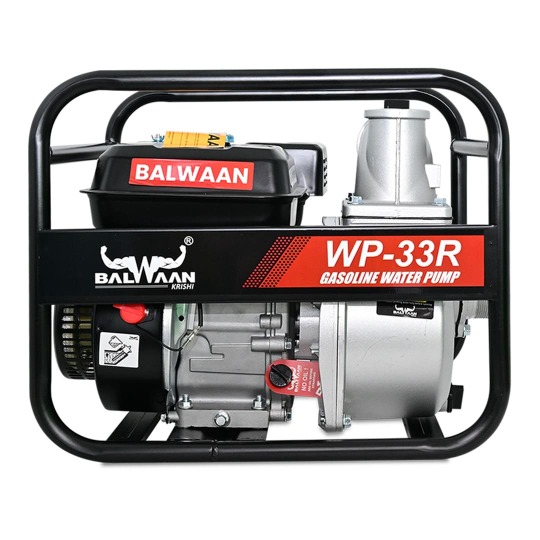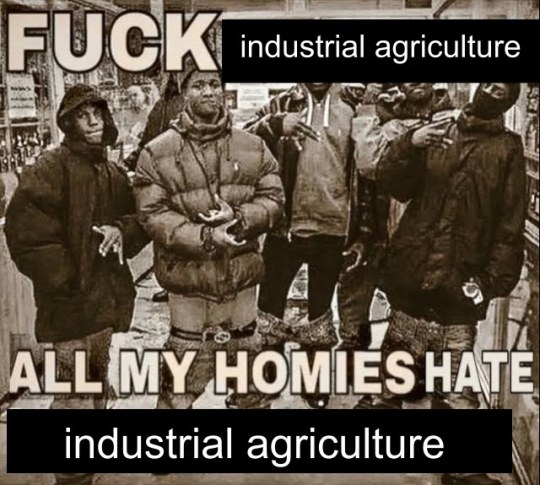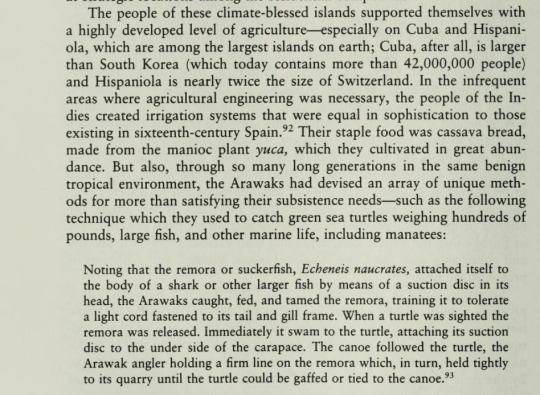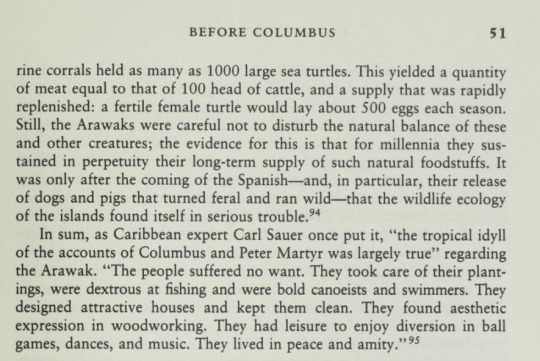#Agriculture Irrigation
Explore tagged Tumblr posts
Text
Balwaan WP-7HP Water Pump: The Ultimate Solution for Agricultural Drainage and Irrigation

At Balwaan Krishi , we understand the importance of efficient irrigation and drainage for a healthy and productive farm. That's why we offer a wide variety of Agricultural Products including Agricultural Machinery like the Balwaan WP-33R 7HP Water Pump. This powerful and reliable water pump is a game-changer for farms of all sizes.
Built to Tackle Tough Conditions
The Balwaan WP-33R 7HP Water Pump is designed to withstand the demands of everyday farm use. Its strong frame structure ensures stability and durability, even on uneven terrain. The robust harness adds another layer of reliability, making it easy to transport the pump around your property. Plus, the materials used in its construction are sourced from trusted vendors, so you can be confident in its long-lasting performance.
Powerful Performance, Efficient Operation
Don't let its medium size fool you; the Balwaan WP-33R 7HP Water Pump packs a punch. This Agricultural Product 7 horsepower engine delivers exceptional pumping power, making it ideal for efficiently irrigating your crops or draining unwanted water from low-lying areas. The high-performance pump house ensures smooth and reliable operation, while the easy-starting recoil system gets you up and running quickly.
Designed for User-Friendliness and Portability
At Balwaan Krishi , we know that user-friendliness is key for farm equipment. That's why the Balwaan WP-33R 7HP Water Pump is designed with convenience in mind. The built-in compact lifting handle makes it easy to carry the pump between different work areas, eliminating the need for extra manpower. Additionally, the water pump is relatively lightweight, weighing approximately 20kg, making it even more manageable.
Fuel Efficiency on Your Side
Saving money on operational costs is crucial for any farm. The Balwaan WP-33R 7HP Water Pump is kind to your wallet thanks to its impressive fuel efficiency. It consumes only 700-800 ml of petrol per hour, allowing you to power through irrigation or drainage tasks without breaking the bank.
Specifications Tailored for Farm Needs
The Balwaan WP-33R 7HP Water Pump boasts impressive specifications that cater directly to the needs of farms. Here's a closer look at some key features:
Engine Power: 7 HP
Maximum Suction: 8 meters
Maximum Head: 22 meters
Inlet/Outlet Port Diameter: 7.62 cm (3 inches)
Maximum Discharge: 1000 liters/minute
These specifications translate to real-world benefits for your farm. The pump's strong suction power allows you to draw water from deep wells or ponds, while the maximum head ensures you can effectively deliver water to higher elevations on your property. The large inlet/outlet diameter facilitates a high flow rate, saving you time when tackling irrigation or drainage tasks.
Peace of Mind with Free Extras
To get you started right away, the Balwaan WP-33R 7HP Water Pump comes with a free 1-liter bottle of engine oil. This thoughtful addition ensures you have the essential oil on hand for proper maintenance and smooth operation of your new water pump.
Beyond the Balwaan WP-33R 7HP Water Pump
At Balwaan Krishi , the Balwaan WP-33R 7HP Water Pump is just one of the many water pumps we offer to support your farm's irrigation and drainage needs. We carry a wide variety of water pumps with different specifications and capabilities to suit the unique requirements of your property. In addition to water pumps, we offer a comprehensive selection of agricultural machinery and farm equipment suppliers to address all your farm's needs. This includes tillers, brush cutters, augers, sprayers, and various other outdoor power tools.
Visit our website or contact us today to explore our extensive inventory and discover how Agri Machines & Tools Brands can become your one-stop shop for all your farm equipment needs.
Let the Balwaan WP-33R 7HP Water Pump be your reliable partner in ensuring a well-irrigated and efficiently drained farm!
0 notes
Text
I really hope they can work the bugs out of this solution, because if it's done right, it'll really be a win-win situation. Less evaporation of water, and solar power being generated every day? Yes, please. We are smart, resourceful beings, and this is far from the most difficult problem we've had to address.
This is also a great example of how we can go back and fix mistakes of the past. We very, very rarely ever come up with technological solutions that take long-term effects on the environment into consideration, and so the way many things are designed often leads to some sort of damage, whether through manufacture, use, disposal, or all of the above. Retrofitting canals (which have been used in agriculture for thousands of years) will have benefits not only in the ways mentioned above, but also gets people thinking more about the impacts we make.
I'm hoping that this will lead to more new technology being developed in ways that already anticipate and account for negative impacts so that they avoid them in the first place, rather than having to engineer new solution many years down the line.
#solar power#solar panels#renewable energy#water#environment#irrigation#agriculture#green energy#conservation#technology#clean energy#science#solarpunk#hopepunk
698 notes
·
View notes
Text














Chicago to Tucson (phone pictures), October 2024.
#flying#airplane#landscape#mountain#photographers on tumblr#textless#amadee ricketts#river#bridge#field#clouds#agriculture#irrigation#center pivot irrigation#desert#arizona#new mexico#kansas#illinois
64 notes
·
View notes
Text
Water scarcity and the high cost of energy represent the main problems for irrigation communities, which manage water for this end, making it available to agriculture. In a context of drought, with a deregulated and changing electricity market, knowing when and how much water crops are going to be irrigated with would allow those who manage them to overcome uncertainty when making decisions and, therefore, guide them towards objectives like economic savings, environmental sustainability, and efficiency. For this, data science and Artificial Intelligence are important resources.
Continue Reading.
72 notes
·
View notes
Text
Some of the world’s largest investment banks, pension funds and insurers, including Manulife Financial Corp.’s John Hancock unit, TIAA and UBS, have been depleting California’s groundwater to grow high-value nuts, leaving less drinking water for the surrounding communities, according to a Bloomberg Green investigation. Wall Street has come to Woodville, wringing it dry. Since 2010, six major investors have quadrupled their farmland under management in California, to almost 120,000 acres in all, equivalent to a third of all the cropland in Connecticut.
[...]
This rush for water is an outgrowth of a decades-long bet on farmland by investors who see food cultivation as an asset class virtually assured of appreciating in a warming, more populous world. Globally, large investors and agribusinesses have snapped up about 163 million acres of farmland in more than 100 countries in the past 20 years. The land grab has given rise to a grab of an even scarcer global commodity: water. In a bid to ensure thriving investment portfolios, some of the world’s largest financial entities have amassed control over lakes, rivers and underground aquifers in places from California to Africa, Australia to South America, giving them outsize roles in managing an endangered resource that’s the basis of life on Earth. The trend has contributed to shifting hydrological patterns that stand to permanently disrupt communities’ access to fresh water. Local populations are paying the price in drained wells, high water bills and contaminated water supplies.
[...]
In the past decade, parts of the San Joaquin Valley have dropped as much as a foot per year, according to the US Geological Survey. Subsidence, as the sinking is called, has damaged bridges, canals and other infrastructure that will cost billions of dollars to fix, the state says. The aquifers themselves are irreparable. Many groundwater basins, when drained, never recover their former storage capacity, hydrologists have found. “Groundwater in California has been treated as an extractive resource—you pump and hope for the best,” says Graham Fogg, an emeritus professor of hydrology at the University of California at Davis. “Capitalism is driving this. Investors don’t care, because in 10 years they can make all the money they want and leave.”
85 notes
·
View notes
Text







Indigenous practices could mitigate the effects of global warming. From building seaside gardens to water management in desert terrain, these time-honored practices work with the natural world’s rhythms.
Some might even hold the key to a more resilient future and a means of building security for both Indigenous communities and other groups disproportionately impacted by climate change.
Read more of these tips here.
16 notes
·
View notes
Text
Excerpt from this story from Grist:
A growing number of companies are bringing automation to agriculture. It could ease the sector’s deepening labor shortage, help farmers manage costs, and protect workers from extreme heat. Automation could also improve yields by bringing greater accuracy to planting, harvesting, and farm management, potentially mitigating some of the challenges of growing food in an ever-warmer world.
But many small farmers and producers across the country aren’t convinced. Barriers to adoption go beyond steep price tags to questions about whether the tools can do the jobs nearly as well as the workers they’d replace. Some of those same workers wonder what this trend might mean for them, and whether machines will lead to exploitation
On some farms, driverless tractors churn through acres of corn, soybeans, lettuce, and more. Such equipment is expensive, and requires mastering new tools, but row crops are fairly easy to automate. Harvesting small, non-uniform and easily damaged fruits like blackberries, or big citruses that take a bit of strength and dexterity to pull off a tree, would be much harder.
That doesn’t deter scientists like Xin Zhang, a biological and agricultural engineer at Mississippi State University. Working with a team at Georgia Institute of Technology, she wants to apply some of the automation techniques surgeons use, and the object-recognition power of advanced cameras and computers, to create robotic berry-picking arms that can pluck the fruits without creating a sticky, purple mess.
The scientists have collaborated with farmers for field trials, but Zhang isn’t sure when the machine might be ready for consumers. Although robotic harvesting is not widespread, a smattering of products have hit the market, and can be seen working from Washington’s orchards to Florida’s produce farms.
3 notes
·
View notes
Text
Me when doing my environmental science homework, at every available opportunity:

#wish there were a class discord or a chill teacher so i could share it#fr though I'm like “oh we're talking about freshwater? hey did you know that agricultural runoff is causing accelerated eutrophication?”#and that a lot of the runoff is bc of erosion caused by the destruction of ecosystems and their vegetation that would've kept soil in place#and the runoff is mostly compromised of fertilizer and bacteria and pesticides from the agriculture and sediment from the eroded land#and that crop irrigation is so inefficient that literally 40% of irrigation water never reaches the crops#and don't even get me started on the FUCKING CORN SUBSIDIES#god those fucking corn subsidies#“hey boudicca what's the worst policy choice the us government made in the 1930s–40s?”#“was it American isolationism? maybe increased militarization? the garbage treatment of women and minorities?”#wrong! it was not stopping those fucking corn subsidies#(this is a joke obviously those other things were worse)#(I'm not actually saying this silly little agricultural practice was worse than Japanese internment don't worry)#but i AM saying that at some point they should've fucking phased out those goddamn corn subsidies#do you wanna know why California grows so much corn even though it's an incredibly water intensive crop and California is dry as shit?#I'll give you three guesses#anyway sorry for rambling my point is fuck industrial agriculture#agriculture#described
9 notes
·
View notes
Text
angriculture is when the crops are irritated
2 notes
·
View notes
Text
Irrigation 💦 !.
#downfalldestiny#life#downfall#Irrigation#magic destinations#magical world#حياة#magic moments#agriculture#Cultivation#Water
51 notes
·
View notes
Link
Two of Israel’s most famous inventions are the commercialized cherry tomato and drip irrigation, so it makes perfect sense that another tomato/water innovation would arise here.
This time around, scientists developed tomatoes that are not only drought-tolerant, but whose yield actually increases in extreme weather conditions.
In a study recently published in the journal PNAS, researchers from The Hebrew University of Jerusalem crossbred two types of tomato species – a wild tomato from the deserts of western Peru and the cultivated tomato – with the aim of identifying which regions of the genome affect agricultural traits such as yields.
In the course of their research, which included DNA sequencing and data analysis of 1,400 plants, they identified interactions between two regions of the tomato genome that lead to increased yield. The new tomatoes are prolific despite consuming less water.
“Studies of complex traits in plants, such as yield and resistance to drought conditions, have been based on significantly smaller populations of around 200 species,” explains doctoral student Shai Torgeman, who conducted the research with Prof. Dani Zamir.
“This makes it impossible to identify all the interactions (epistasis) between the genes, as well as their influence on important agricultural traits,” Torgeman said.
“In this study, we genetically crossed two different species of tomato, and proved that by use of larger population and a genetic map that includes thousands of markers, it is possible to identify areas in the genome that have interaction between them that increases the yield.”
Now, the new varieties are being cultivated with the aim of commercializing them on the food market.
50 notes
·
View notes
Text
What's the Deal with Cotton?
For @rangerofthesouth , I don't work with cotton but we just went over all this in my field crop class and how we grow cotton feels very bizarre? Keep reading below for stuff on GMOs and cotton farming.
As far as I can tell cotton is probably one of the most technology-intensive crops we grow in the US. Not necessarily physical technology as in equipment, but gene technology (GMOs), breeding, and chemical use. It has all the standard things used on it that other industrial row crops have, such as herbicides, fertilizers, and pesticides. But it also has GMO traits and needs to be treated with plant growth regulators (PGRs), and defoliant before harvest.
So it turns out, cotton is a perennial plant. So if the weather is right it will just keep growing into something of a bush/tree sort of thing. But when grown as a crop they get treated with PGRs to slow/stop vegetative growth and to trigger reproductive growth (aka, the flowers that form into cotton bolls). Link to a picture of a guy with cotton not treated with PGRs on time below.
There's multiple kinds of GMOs. The big ones are traits added for herbicide/chemical resistance in the plant (such as Roundup Ready), and then there's pest resistance which usually is the Bt (Bacillus thuringiensis) trait. Bt is a bacteria that will infect insects if they feed on the plant, killing them off or deterring them. As far as I'm aware the big GMO crops in the US are soybeans, corn, and cotton; As well please note cotton production is very different across the world, I'm strictly speaking about the US.
What kind of crazy about pest resistant GMOs though, is it was touted around as an end to pesticides for a while. There was a quote I heard somewhere though that goes something like "if you're in a war and you have weaponry but the other side has evolution, the other side is going to win". Basically, insects started developing a resistance to Bt. And so different types of Bt traits keep getting stacked on one another to keep it effective, and currently we're up to 3 stacked Bt traits (see chart below, its from my class lol). Only the upper most trait on this chart is still effective, the others aren't.

What's nuts about this, is that cotton farmers are paying for every stacked gene even if they're ineffective. According to my prof a bag of conventional untreated cotton seed is ~$100, while GMO cotton is ~$600 a bag. The price of cotton off the field is really bad too, as far as I last heard its $0.70/1 lb. There's more numbers than this but as you can imagine with chemical applications, gas for equipment, and fertilizer, its looking not profitable. And so the US cotton industry is hella subsidized and there's so many government programs to keep it alive because many farmers cannot survive growing cotton without the subsidies.
I don't know a whole lot other than this because I've only just begun looking at cotton, but here's some questions and things I'm thinking about. First, clearly we need a whole system change because everything conventional ag brings out to stop the pests and weeds causes resistance development; chemicals and genes are helpful technologies, but only when used carefully within other non-chemical pest management strategies. We're currently deepening a major environmental and agricultural crisis with ag chemical usage. Second, I really want to look more into the legal side of things with government crop subsidies and insurance because it really seems to be the core things propping up all this for multiple crops (corn and soybeans included). And then, what would cotton look like in an alternative agricultural system? Personally I've only ever seen it as a conventional row crop.
#I normally just use tumblr mobile but I whipped out my laptop for this one lol#agriculture#cotton#fiber#rangerofthesouth#I'm going to add a reblog about irrigation
7 notes
·
View notes
Text

Canal de riego seco en otoño, cerca de Puente de Orbigo, León, 2011.
#landscape#rural#agriculture#irrigation#canal#león#castilla y león#españa#2011#photographers on tumblr#camino francés#camino santiago
5 notes
·
View notes
Photo



American Holocaust — David E. Stannard
#cuba#hispaniola#agriculture#irrigation systems#agricultural engineering#arawaks#yuca#wildlife ecology#american holocaust#American Holocaust: The Conquest of the New World#holocaust#David E. Stannard#history#nonfiction#spanish#north america#south america#indigenous#atypicalreads#nsnv#colonialism#mesoamerica
5 notes
·
View notes
Text

Got this storage unit for selling crops, let’s see how it goes 👩🏻🌾🧑🏻🌾🌾
#tsuki odyssey#tsuki adventure#cottage aesthetic#cottagecore#cozy cottage#cottage moodboard#cute aesthetic#cozycore#cute#cottage vibes#farmland#farmlife#farmcore#farmhouse#farm#farm girl#tsuki#irrigation#agriculture#fields#field#crop fields#mushroom village#small town core#small town vibes#small town
4 notes
·
View notes
